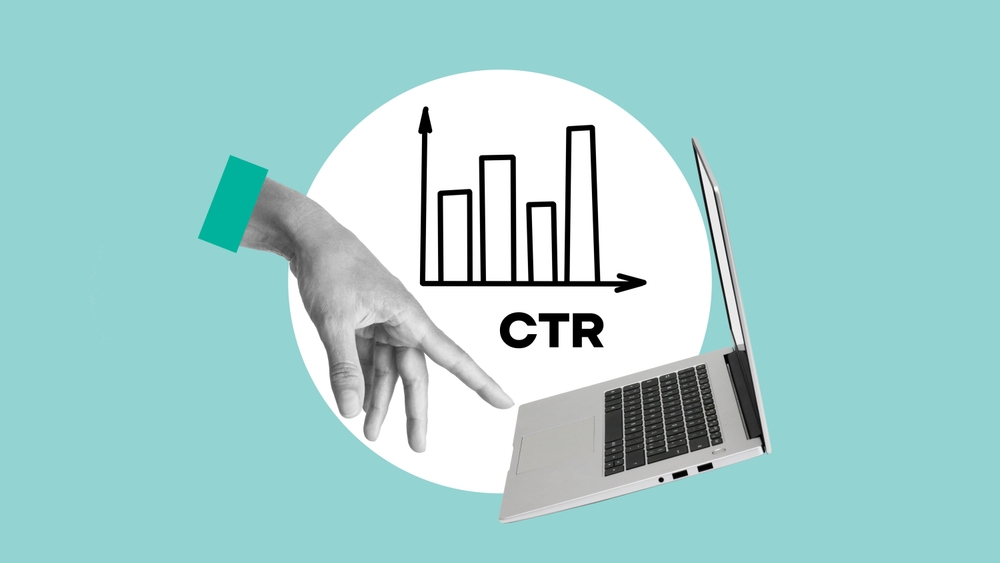The importance of CTR cannot be overstated in digital marketing as it is considered the heartbeat of online engagement. CTR is not a secret code but it’s a key performance indicator that helps you to measure the success of an ad to capture the user’s attention. The more attention the advertisement has generated, the greater the click-through rate.
To measure this metric successfully it is very important to understand this concept in detail to make better decisions. So that’s why we take this guide for you in which we discuss the captivating world of Click-Through Rates, understand what CTR is all about, and why it’s the lifeblood of your digital strategy.
What is Click-Through Rate (CTR)?
First things first, what exactly is this CTR we keep talking about? Click-through rate, or CTR, is a metric used in digital marketing to measure the effectiveness of an online advertising campaign or a webpage in generating clicks. It’s like the applause after a magician pulls a rabbit out of a hat, a sign that your trick was indeed magical.
This applause tells how much people like it. In simpler terms, CTR is the ratio of people who clicked on your ad or link to those who saw it. The higher the CTR, the more successful your online endeavours.
Purpose of using CTR
CTR helps you to:
- Analyse the user behaviour in detail using the Click-through rate. By analysing CTR data, you can gain invaluable insights into what motivates users to click. This knowledge can be used to tailor your content, making it more appealing and engaging to your target audience.
- Run the Effective campaigns using CTR analysis. By meticulously examining the CTR of different ads and keywords, you can refine your campaigns for maximum impact. In addition, This optimization ensures that your marketing efforts are cost-effective and result in a higher ROI.
Importance of Click-Through Rate
CTR is not just a number; it is a barometer of your marketing success. It serves as a reliable indicator of how well your content, ads, or website is performing.
Moreover, A high CTR suggests that your content is engaging and compelling, while a low CTR indicates the need for improvement. It’s a direct reflection of your ability to entice users and drive traffic to your site. CTR is important as it helps you to:
- Measures Engagement: CTR tells you how engaging your content is. A high CTR indicates that your content is resonating with your target audience, while a low CTR means it might be time for a content makeover.
- It Impacts SEO: Search engines love a good CTR. If your page or ad has a high CTR, it sends a signal to search engines that your content is relevant and valuable, which can positively affect your SEO rankings.
- It’s a Conversion Indicator: More clicks often lead to more conversions. Whether you want users to sign up for a newsletter, make a purchase, or fill out a contact form, a high CTR can be your best buddy in achieving those goals.
How to Calculate CTR
Furthermore, The formula for calculating CTR is straightforward:
- CTR = (Number of Clicks / Number of Impressions) * 100
- Number of clicks: The number of clicks shows the number of users who clicked on your specific link or ad.
- Number of impressions: The number of impressions shows the total number of users who only viewed your specific link or ad.
For instance, if your ad receives 100 clicks from 2,000 impressions, your CTR would be (100 / 2000) * 100 = 5%. It’s crucial to remember that CTR is usually expressed as a percentage.
What is a good CTR?
Now that you have gained the basic knowledge about CTR and hope to understand the main concept, most people ask the question about the CTR that is “What’s a good CTR, and how do I know if I’m doing well?” The answer isn’t a one-size-fits-all. It depends on various factors, including your industry, ad type, and audience. But roughly CTR above 2% is often considered decent.
A CTR exceeding 5% is excellent, while a CTR below 1% may indicate room for improvement. But For digital marketing, the average CTR for display ads typically hovers around 0.46%, while for search ads, it’s about 1.91%. it’s an estimated CTR rate but Your goal should always be to improve your CTR over time.
How does the click-through rate measure effectiveness?
Your CTR is a report card for your digital marketing efforts. It’s a performance indicator that gauges how well your ads or content are doing. But let’s dig deeper into how it does that:
- Ad Relevance: If your CTR is high, it indicates that your ad is relevant to the users who see it. Google, for example, rewards relevancy with better ad positions and lower costs per click.
- User Interest: A higher CTR shows that your content or ad is compelling and grabs users’ attention. It’s like having a conversation at a noisy party – you want people to listen to what you’re saying.
- Effect on Costs: A good CTR can lead to lower costs per click. It’s like finding a discount coupon for your favourite pizza – you get more for less.
The Role of CTR in SEO
Click-through rate is not only vital for assessing the effectiveness of advertisements but also plays a crucial role in search engine optimization (SEO). Search engines like Google consider CTR when ranking web pages. If your page has a high CTR, it’s seen as more relevant, which can positively impact your search engine rankings.
Moreover, Crafting SEO-friendly titles and meta descriptions can increase your CTR. When users see a compelling title and description in search results, they’re more likely to click.
How to Improve CTR for Search Ads
Search ads are a popular medium for businesses to reach their target audience. To enhance CTR for search ads, consider these tactics:
Craft Compelling Headlines
- Create attention-grabbing headlines that pique curiosity and provide value to users.
- Use power words, numbers, and emotional triggers to entice clicks.
- Use negative keywords to filter out irrelevant visitors.
- Continuously monitor and refine your keyword strategy.
Optimize Meta Descriptions
- Write concise and descriptive meta descriptions that accurately represent your content.
- Add relevant keywords to increase your website’s visibility in search results.
- Optimize landing pages to ensure alignment with ad content.
- Make advantage of ad extensions to offer users more details and reasons to click.
Optimize other strategies
- A/B Testing: Continuously experiment with different ad copy, visuals, and calls to action to identify what resonates best with your audience.
- Improve Website Speed: Faster loading times lead to a seamless user experience, which can positively impact CTR.
- Mobile Optimization: Ensure that your content is mobile-friendly, as an increasing number of users access the internet via mobile devices.
- Measuring CTR Effectively: To measure CTR effectively, use online analytics tools and platforms, such as Google Analytics. These tools provide a comprehensive view of your CTR, allowing you to assess its performance.
Frequently Asked Questions
What's a good CTR for Google Ads?
A good CTR for Google Ads can vary by industry, but a benchmark to aim for is around 1-2%. However, always strive to improve your CTR over time.
Does a high CTR guarantee more conversions?
Not necessarily. While a high CTR is a positive sign, it doesn’t guarantee more conversions. The quality of your landing page and the relevance of your offer play crucial roles in conversion rates. A high CTR with low-quality clicks can lead to high bounce rates and minimal conversions. Therefore, achieving a balance between CTR and conversion rate is crucial for a successful online marketing campaign.
What Is an Average CTR?
On average, different industries and platforms have varying CTR benchmarks. For instance, Google Ads typically see an average CTR of 1.91% for search and 0.35% for display ads. It’s important to research and understand industry-specific CTR benchmarks to set realistic goals.
Can a low CTR hurt my SEO?
While a low CTR isn’t a direct SEO ranking factor, it can indirectly impact your SEO. Low CTR may signal to search engines that your content isn’t relevant, potentially leading to lower rankings.
What is a "good" CTR for email marketing?
A good CTR for email marketing typically ranges from 1% to 5%. However, it’s crucial to consider your industry and target audience when determining what’s good for your specific email campaigns.

